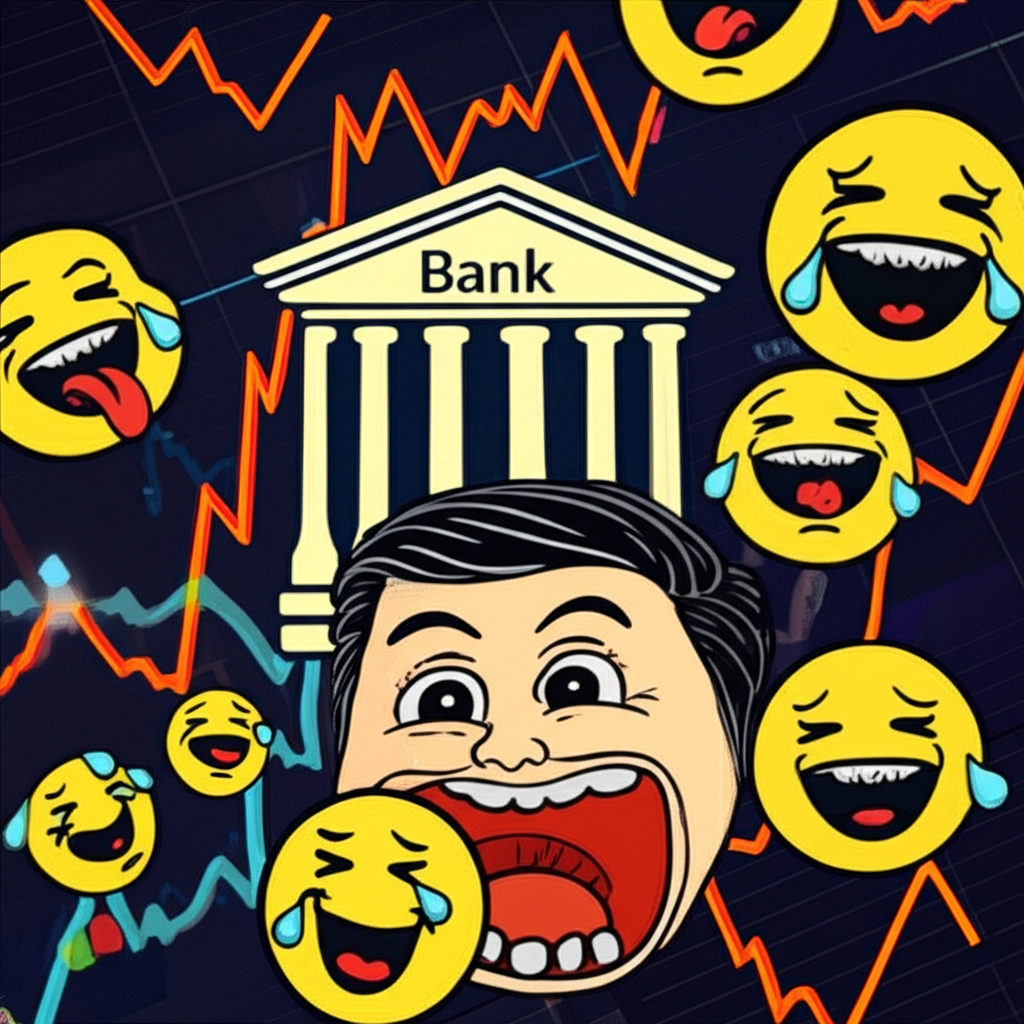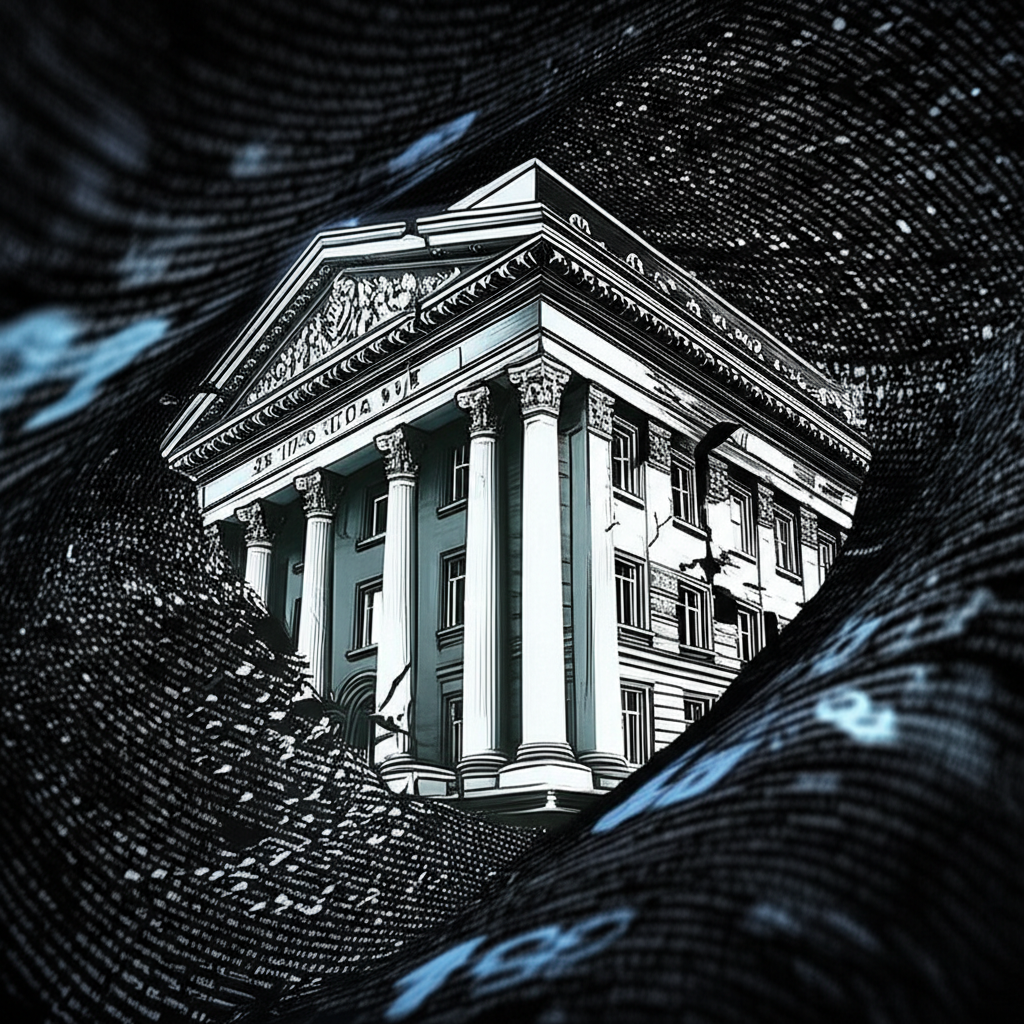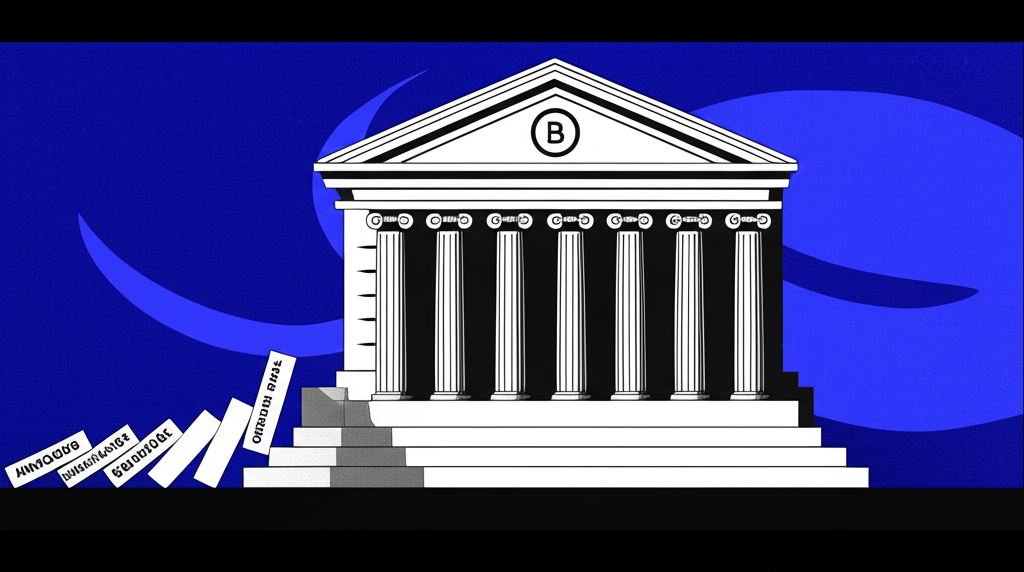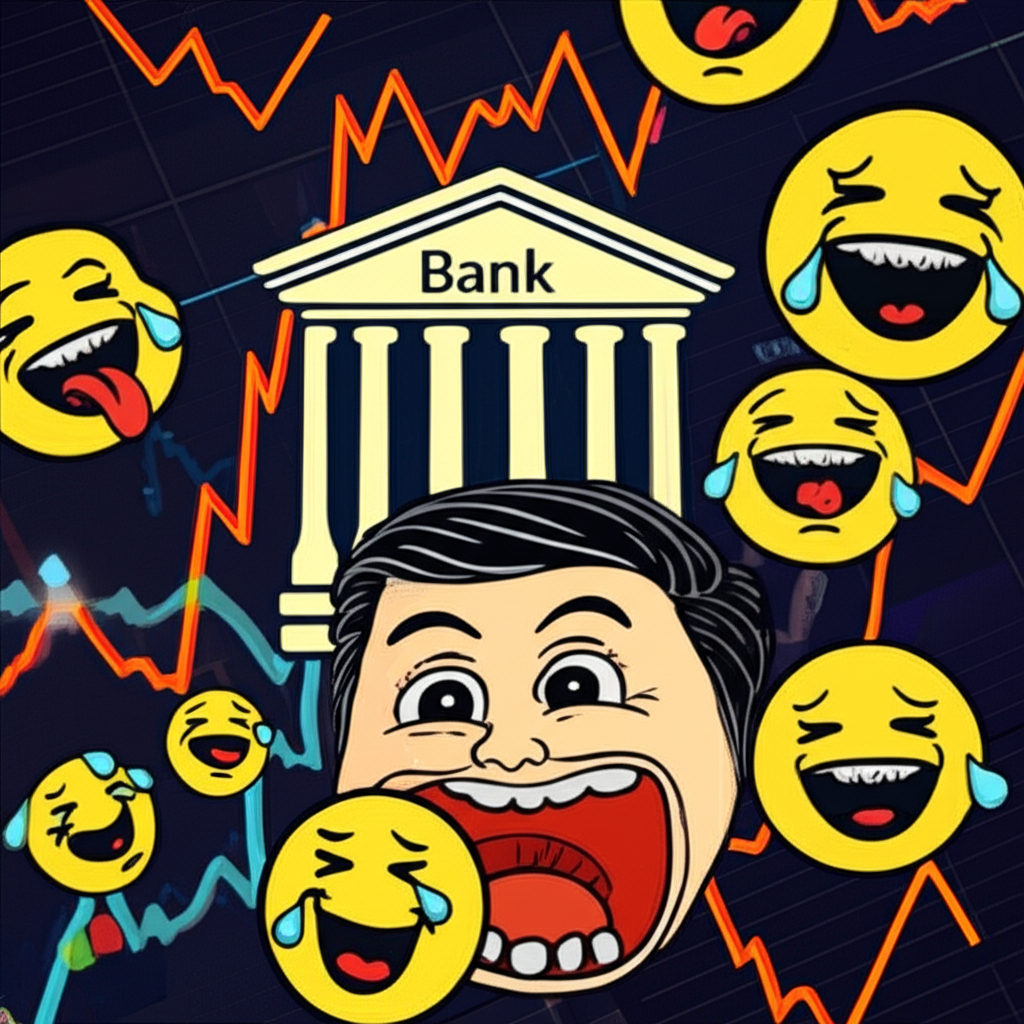Introduction: The “Credit Suisse Meme” Phenomenon
Finance has long been seen as an elite, impenetrable world—governed by complex mechanisms, global policies, and high-stakes decision-making. But in early 2023, the collapse of one of Switzerland’s most iconic financial institutions, Credit Suisse, spilled far beyond boardrooms and regulatory meetings, landing squarely in the chaotic realm of internet culture. What began as a quiet unraveling of financial stability quickly morphed into a viral sensation, with online communities transforming a serious banking crisis into a wave of dark humor and biting satire. The rise of the “Credit Suisse meme” was not just a moment of digital irony—it was a cultural reflection of widespread anxiety, distrust, and the accelerating power of social media to shape financial narratives.

From Reddit threads to Twitter feeds, the downfall of Credit Suisse was no longer just a matter of balance sheets and capital ratios; it became a shared digital experience. Memes depicting the bank as a sinking ship or rebranding it as “Debit Suisse” flooded timelines, turning institutional failure into a form of collective commentary. This article explores how a century-old banking giant became a punchline, the real-world consequences of online ridicule, and what this phenomenon reveals about the evolving relationship between finance and digital culture in the 21st century.
The Financial Quagmire: Why Credit Suisse Became a Meme Candidate
Credit Suisse didn’t become a meme overnight. Its transformation from respected financial pillar to internet joke was the result of years of accumulating missteps, eroding trust, and growing public skepticism. Once a symbol of Swiss reliability and discretion, the bank found itself increasingly exposed to market scrutiny as its financial health deteriorated. By late 2022, dwindling investor confidence, a weakening capital base, and a string of damaging headlines had left the institution vulnerable—not just to economic headwinds, but to the merciless lens of online culture.

The global financial landscape at the time was already tense. Rising interest rates, inflationary pressures, and fears of recession had made investors hyper-sensitive to signs of instability. In this climate, Credit Suisse’s structural weaknesses became glaringly visible. Its share price began a steep decline, and whispers of insolvency started circulating—first in financial circles, then across social media. It was this perfect storm of real financial distress and heightened public awareness that turned the bank into a prime target for online commentary, speculation, and, ultimately, ridicule.
A History of Troubles: Key Events Leading to the Crisis
The roots of Credit Suisse’s downfall stretch back years, marked by a series of high-profile failures that exposed deep flaws in its risk management and corporate governance. In March 2021, the collapse of Archegos Capital Management delivered a devastating blow, costing the bank approximately $5.5 billion. As one of the largest single-client losses in banking history, the incident raised serious questions about Credit Suisse’s due diligence and oversight processes.
Just months later, the bank was entangled in another scandal involving Greensill Capital, a supply chain finance firm that collapsed under the weight of risky lending practices. Credit Suisse had invested heavily in funds tied to Greensill, and when the firm failed, billions in client assets were frozen, further damaging the bank’s credibility. These two events alone wiped out billions in shareholder value and triggered a wave of executive departures.

Behind the scenes, internal audits and regulatory reviews pointed to systemic issues—overreliance on volatile investment banking revenue, poor risk controls, and a corporate culture resistant to change. As the Financial Times reported, these “successive scandals…left Credit Suisse reeling” and “severely damaged its reputation” Financial Times. By 2022, the bank was struggling to attract and retain clients, while analysts downgraded its outlook repeatedly. What had once been a cornerstone of Swiss finance now appeared increasingly fragile—a perception that would soon be amplified in ways no boardroom strategy could contain.
When Finance Meets Memes: Understanding the “Meme Stock” Connection
The term “meme stock” entered the financial lexicon during the 2021 retail trading surge, when investors on platforms like Reddit’s r/WallStreetBets banded together to drive up shares of companies like GameStop (GME) and AMC Entertainment (AMC). These stocks became symbols of rebellion—underdogs propelled by coordinated buying, social media narratives, and a shared desire to challenge Wall Street’s dominance. Their price movements often defied traditional valuation metrics, sustained instead by community sentiment and viral momentum.
Credit Suisse’s situation, while drawing similar levels of online attention, was fundamentally different. There was no coordinated effort to buy and hold the stock. Instead of rallying behind the bank, retail investors were sounding alarm bells, sharing screenshots of plunging share prices, and circulating rumors about potential collapse. The viral energy wasn’t bullish—it was cautionary, even apocalyptic. While meme stocks like GameStop were about empowerment, the Credit Suisse discourse was about fear, distrust, and the fragility of financial institutions once considered untouchable.
The Role of Social Media: Reddit, WallStreetBets, and Amplified Fears
Social media platforms didn’t cause Credit Suisse’s collapse, but they played a critical role in shaping its public narrative. Reddit, particularly the r/WallStreetBets community, became a hub for real-time analysis, speculation, and satire. Threads dissecting quarterly earnings reports sat alongside memes depicting the bank as a burning building or a sinking ship. Twitter amplified these messages further, with hashtags like #CreditSuisse and #DebitSuisse trending as users shared news, jokes, and worst-case scenarios.
Unlike the meme stock phenomenon, where social media fueled optimism and price surges, the online conversation around Credit Suisse created a feedback loop of anxiety. Each dip in the stock price was met with renewed speculation. Rumors about liquidity issues, client withdrawals, or regulatory intervention spread rapidly—sometimes outpacing official statements. For retail investors monitoring these discussions, the sheer volume of negative sentiment became a self-fulfilling prophecy, influencing trading behavior and deepening the crisis of confidence.
This digital environment didn’t operate in isolation. Traditional media outlets began referencing online chatter, further legitimizing the memes as indicators of market mood. In this way, internet culture became a mirror—and in some cases, an amplifier—of the real financial instability unfolding behind the scenes.
Anatomy of a Viral Crisis: Iconic Credit Suisse Memes and Their Meanings
Memes are more than just jokes—they’re cultural shorthand, distilling complex emotions and events into instantly recognizable visuals. In the case of Credit Suisse, memes became a way for the public to process a crisis that felt both distant and deeply consequential. They combined humor with critique, offering a sense of control in the face of systemic uncertainty.
One recurring theme was the transformation of national symbols. The Swiss flag, long associated with neutrality, precision, and financial stability, was frequently depicted in states of decay—unraveling, on fire, or sinking beneath waves. These images symbolized not just the failure of a single bank, but a broader erosion of trust in Swiss banking as an institution.
Another popular format repurposed the “distracted boyfriend” meme, showing an investor glancing away from stable, traditional assets toward the chaotic spectacle of Credit Suisse’s downfall. This framing captured the morbid fascination the crisis inspired—a mix of disbelief and voyeurism.
Visuals of bank runs, though exaggerated, also gained traction. Depictions of panicked crowds lining up outside branches, or ATMs spewing empty receipts, played on real fears of liquidity collapse. While no physical run occurred, the psychological impact was real, reflecting public anxiety about the fragility of digital banking and the speed at which confidence can evaporate.
“Debit Suisse”: The Epitome of a Banking Crisis Meme
Among all the jokes, “Debit Suisse” stood out as the most potent and widely recognized. A simple linguistic twist—replacing “Credit” with “Debit”—it instantly reframed the bank’s identity. No longer a source of financial strength, the institution was now seen as a black hole of losses, debt, and diminishing trust.
The brilliance of the meme lay in its accessibility. You didn’t need to understand tier-1 capital ratios or contingent convertible bonds to get the joke. “Debit Suisse” was intuitive, darkly humorous, and painfully accurate in capturing public perception. It spread rapidly across platforms, appearing in tweets, forum posts, and even mainstream news segments as shorthand for institutional failure.
More than just a punchline, the meme became a cultural verdict—a symbol of how far the bank had fallen. It was a reminder that in the digital age, reputation can be undone not just by balance sheet deficits, but by the relentless march of online ridicule.
From Jokes to Reality: The Impact of Memes on Perception
It would be a mistake to claim that memes alone brought down Credit Suisse. The bank’s collapse was the result of real financial mismanagement, regulatory failures, and structural weaknesses. But to dismiss the role of online discourse would be equally shortsighted.
Memes function as cognitive shortcuts—they simplify complex realities into digestible, emotionally resonant messages. In doing so, they shape how people understand events. For many retail investors and casual observers, the constant stream of Credit Suisse memes reinforced a single narrative: the bank was doomed. This perception made it harder for the institution to stabilize, attract new investors, or regain credibility—even as Swiss authorities stepped in with emergency measures.
Moreover, the virality of the memes attracted attention from traditional media, policymakers, and financial analysts, who began to treat online sentiment as a barometer of market confidence. In this way, the jokes ceased to be just jokes—they became part of the crisis itself, influencing behavior, sentiment, and even policy discussions.
The Aftermath: UBS Acquisition and the End of an Era
The crisis reached its climax in March 2023. As Credit Suisse’s share price plummeted and interbank lending froze, Swiss regulators acted swiftly to prevent a systemic collapse. On March 19, 2023, UBS, Credit Suisse’s long-standing rival, announced a government-brokered acquisition in an all-share deal valued at 3 billion Swiss francs ($3.2 billion). The move was backed by emergency liquidity support from the Swiss National Bank and billions in state guarantees.
This emergency takeover marked the end of Credit Suisse as an independent institution—a historic moment that reshaped Switzerland’s financial landscape. The merger created a domestic banking giant but also raised concerns about concentration risk and the long-term health of the Swiss economy.
One of the most controversial aspects of the deal was the decision to write down approximately 16 billion Swiss francs ($17.2 billion) of Credit Suisse’s Additional Tier 1 (AT1) bonds. This move, which effectively wiped out bondholder value, sparked outrage and legal challenges across global financial markets. Critics argued it undermined investor confidence in debt instruments deemed essential for bank stability. As Reuters noted, the “emergency rescue deal” was designed to “avert a wider banking crisis” Reuters.
Lessons Learned: What the Credit Suisse Meme Teaches Us
The Credit Suisse saga offers several enduring lessons for institutions, regulators, and the public. First, reputation is no longer built solely through decades of service—it can be dismantled in weeks through digital narratives. In the age of instant communication, a single meme can do more damage than a negative earnings report.
Second, social media has become a powerful force in financial markets, capable of amplifying both truth and misinformation. Regulators now face the challenge of monitoring sentiment in real time, not just financial data. The line between market psychology and market reality has never been thinner.
Third, the public’s growing skepticism toward traditional finance—fueled by past bailouts, inequality, and opaque decision-making—found a voice in these memes. They weren’t just jokes; they were expressions of frustration, distrust, and a demand for accountability.
Finally, the crisis underscores the need for financial institutions to engage with digital culture proactively. Ignoring online discourse is no longer an option. Institutions must monitor sentiment, communicate transparently, and respond swiftly to emerging narratives—before they spiral into viral crises.
Conclusion: More Than Just a Meme
The “Credit Suisse meme” was never just about internet humor. It was a cultural phenomenon that reflected a moment of profound financial and social change. Beneath the jokes lay deep-seated anxieties about the stability of global banking, the concentration of financial power, and the fragility of trust. It demonstrated how digital culture can process, critique, and accelerate real-world events—turning a slow-motion financial collapse into a viral spectacle.
The story of Credit Suisse—from its storied past to its ignominious end—serves as a cautionary tale for institutions that underestimate the power of perception. In today’s interconnected world, a bank’s survival depends not only on its balance sheet but also on its presence in the public imagination. And in that arena, a single meme can speak louder than a thousand press releases.
Frequently Asked Questions (FAQs)
What were the primary reasons for Credit Suisse’s financial difficulties that led to the memes?
Credit Suisse’s financial difficulties stemmed from a series of high-profile scandals, including significant losses from its exposure to Archegos Capital Management and Greensill Capital. These events, coupled with years of mismanagement, capital concerns, and a general loss of market confidence, created a precarious situation that made the bank vulnerable to speculation and online satire.
How is the “Credit Suisse meme” distinct from other “meme stocks” like GameStop or AMC?
Unlike GameStop or AMC, which saw their stock prices driven up by coordinated retail investor efforts against short sellers, Credit Suisse was a genuinely distressed institution whose stock was declining due to fundamental financial issues. The online discourse around Credit Suisse was more about amplifying existing fears and satirizing a crisis, rather than orchestrating a collective buying strategy.
Can you provide examples of popular Credit Suisse memes and explain their significance?
Popular memes included the “Debit Suisse” wordplay, which symbolized the bank’s financial losses. Others depicted the Swiss flag unraveling or burning, representing the erosion of trust in a national institution. Visuals of exaggerated “bank runs” also circulated, playing on fears of liquidity issues and reflecting widespread anxiety.
What role did social media platforms, particularly Reddit, play in the spread of the Credit Suisse memes?
Social media platforms like Reddit (especially r/WallStreetBets) and Twitter served as hotbeds for discussion and speculation. They rapidly disseminated news, rumors, and satirical content, amplifying public awareness and fears about Credit Suisse’s stability. While not causing the crisis, they significantly influenced public perception and contributed to market volatility.
What does “Debit Suisse” refer to, and why did it become a prominent meme?
“Debit Suisse” is a widely recognized meme that plays on the bank’s name. It humorously implies that the bank was accumulating debt or suffering losses (“debit” instead of “credit”). It resonated strongly because it was a simple, clever, and immediately understandable way to symbolize the bank’s financial woes to a broad audience.
Did the Credit Suisse memes have any measurable impact on the bank’s stock price or public perception?
While memes did not directly cause the bank’s collapse, they had a significant impact on public perception. They amplified negative sentiment, eroded confidence, and reinforced the narrative of a bank in deep trouble. This made it harder for Credit Suisse to regain trust and manage the crisis, even as official efforts were underway.
What was the ultimate outcome for Credit Suisse, and how does the UBS acquisition relate to the meme narrative?
Credit Suisse was ultimately acquired by its rival, UBS, in an emergency, government-backed deal in March 2023. This acquisition marked the end of Credit Suisse as an independent entity. The memes, which satirized the bank’s decline, effectively foreshadowed and reflected the growing public and market belief that the bank’s independent future was unsustainable.
How did the Credit Suisse controversy contribute to broader concerns about banking stability in 2022-2023?
The Credit Suisse controversy, alongside other events like the Silicon Valley Bank collapse, fueled broader concerns about systemic risk and banking stability. It highlighted the fragility of trust in financial institutions during a period of economic uncertainty and demonstrated how quickly market anxieties could spread, potentially leading to contagion.
Are there any long-term lessons about finance and digital culture that can be drawn from the Credit Suisse meme phenomenon?
Yes, the phenomenon teaches valuable lessons about the fragility of reputation in the digital age, the power of social media to shape public perception, and the challenge for financial institutions and regulators to manage narratives in real-time. It underscores the increasing interplay between traditional financial markets and rapidly evolving online cultural trends.
Where can one find a comprehensive timeline of Credit Suisse’s crisis and its related memes?
Comprehensive timelines of Credit Suisse’s crisis can be found on major financial news outlets like Bloomberg, Reuters, and the Wall Street Journal, detailing key events and their impact. Examples of related memes are widely available across social media platforms such as Reddit, Twitter, and various meme aggregation sites, particularly from late 2022 through early 2023.

留言